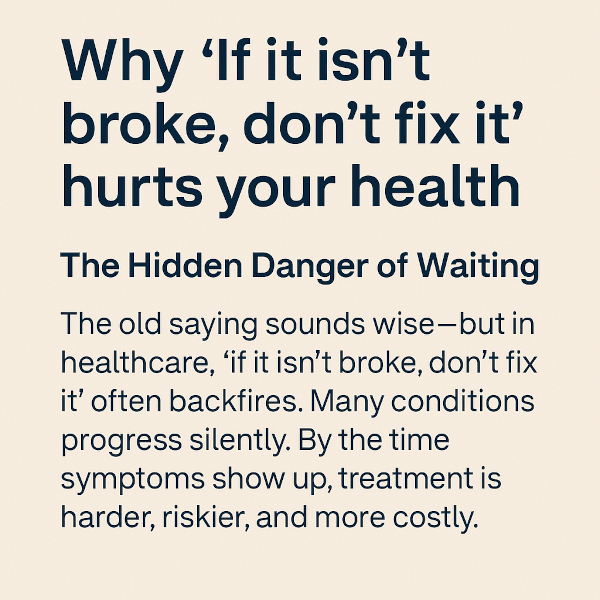Back
Why “If It Isn’t Broke, Don’t Fix It” Hurts Your Health
The Hidden Danger of Waiting
The old saying sounds wise—but in healthcare, “if it isn’t broke, don’t fix it” often backfires. Many conditions progress silently. By the time symptoms show up, treatment is harder, riskier, and more costly.
The Real Cost of Ignoring Early Signs
When people avoid care until something feels wrong, small issues can snowball:
- High blood pressure quietly damages the heart for years before symptoms.
- Gum disease advances without pain until teeth loosen.
- Joint stiffness becomes arthritis that limits mobility.
Early intervention isn’t about fixing what’s “broken.” It’s about preventing the break.
One Story, Two Outcomes
- Sam gets regular dental checkups. A small crack in a filling is spotted and repaired. Problem solved in one visit.
- Jordan skips visits, assuming “no pain means no problem.” Months later, that tiny crack spreads, bacteria invade, and now it’s a fractured tooth needing a crown—or even extraction.
Same start. Very different endings.
Why Problems Stay Silent
- Many diseases progress without pain—until advanced stages.
- The body adapts, masking early warning signs.
- Once symptoms appear, damage may already be permanent.
- Preventive care (checkups, screenings, routine tests) is the only way to catch issues early.
The Smart Move
